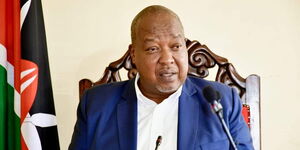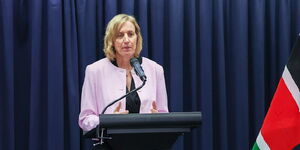The Kenyan shilling is likely to continue holding steady against the US dollar, the latest economic outlook has shown.
In its latest African Economic Outlook 2025, the African Development Bank (AfDB) projects that Kenya's currency will remain stable, given the stability in inflation and exchange rates.
According to experts from the Ivory Coast-based regional bank, Kenya's economy will grow by 5.6 per cent in 2025, driven by robust performance in the services sector and household consumption.
Further, the inflation is expected to decline to 5.5 per cent in 2025, supported by the easing food and global price pressures.
These factors will aid the shilling to continue on its stability path even as AfDB anticipates that the monetary policy will remain accommodative, given the projected stability in inflation and exchange rates.
Additionally, the narrowing of the fiscal deficit, projected to decrease to 5.0 per cent of GDP in 2025, and the expected reduction in the current account deficit to 4.5 per cent of GDP, are positive indicators for the shilling's stability, according to the bank.
Meanwhile, experts from Goldman Sachs Group Inc. had earlier projected that the Central Bank of Kenya (CBK) could further slash the base lending rates from the current 10.00 per cent basis to 8.5 per cent, offering an opportunity for Kenyans to access, among other benefits, cheaper loans, experts have projected.
The shilling, currently trading at Ksh129.2 against the dollar, has been bolstered by improved market sentiment following the successful issuance of Ksh193.8 billion (USD1.5 billion) in Eurobonds to buy back the Ksh258 billion (USD2 billion) Eurobond maturing in June 2024.
This move led to a 121 per cent increase in portfolio investment inflows, reversing net outflows of Ksh30.1 billion (USD233.4 million) recorded in June of the previous year.
In addition to these buffers, lower oil prices have helped "reduce Kenya’s external funding needs and will support the shilling," Patrick Curran, a senior economist at Tellimer Ltd, told Bloomberg earlier this month.
Earlier, there were fears that the US President Donald Trump’s tariff turmoil could have an impact on the shilling.
Nevertheless, the AfDB cautioned that Kenya's economic outlook is subject to several risks, including tight global financing conditions, potential droughts, political instability in neighbouring countries, and a sluggish global economic recovery. These factors could impact the shilling's performance and the economic landscape.












